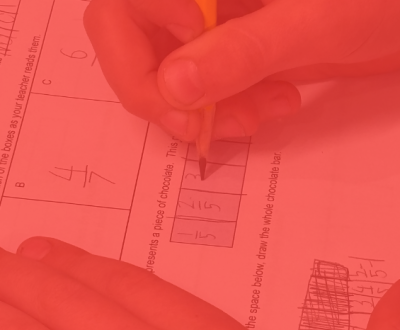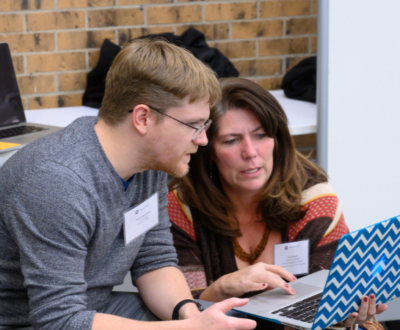Data Dive Into Early Numeracy
- October 31, 2024
- Blog

Strong early numeracy skills lay the foundation for future success in math. The Universal Screeners for Number Sense (USNS) are designed to provide clear, actionable insights into students’ numeracy development. Paired with Forefront, the assessments also offer a national benchmark called the USNS Global Cohort.
This fall, our team analyzed nearly 150,000 student records from the USNS Global Cohort dataset. We uncovered five key insights that reveal the state of early numeracy across the country. Our findings highlight the most challenging foundational skills, show where early gaps first appear, and demonstrate how opportunity gaps widen over time. These insights offer valuable guidance for teachers and interventionists dedicated to supporting their students’ math development.
The USNS Global Cohort
The USNS Global Cohort represents a comprehensive dataset of anonymous, aggregated assessment results from 844 schools across 29 US states, along with select international schools in the Middle East, North Africa, and South America. With nearly 150,000 student records, this dynamic dataset continues to expand as more schools adopt USNS assessment tools and Forefront.
For Forefront clients, you may learn how to access and add this dataset to your reports [here]. This dataset can provide a national benchmark for comparing results at the classroom, school, or district level. It can be viewed alongside overall assessment results, item analysis results, standards performance, and, for districts that have demographics enabled, it can be broken down to review performance gaps across different student groups.
Counting, Counting, Counting
In the fall kindergarten assessments, the most challenging tasks are related to counting and cardinality. Many students are approaching their conceptual understanding of cardinality, but do not understand that the number of objects is the same regardless of their arrangement or the order in which they were counted. The video below shows the most missed task in kindergarten.
The first tasks in each of the Screeners are related to the number sequence: counting forward and backward. Understanding the number sequence is a foundational skill for working with numbers. In the lower grades, the students that miss these tasks or struggle to count to ten, 100, or cross centuries and millennia, need immediate attention.
Alternatively, in upper elementary, these tasks reveal that students may not be provided with enough opportunities to understand and practice the number sequence. In particular, backward counting is not often a standard part of curricula and is not addressed in the Common Core grade-level expectations. The ability of students to recite the number sequence backwards, however, is an essential precursor to understanding subtraction. Providing students with the opportunity to practice counting in your classrooms is key to their mathematical development.
Subtraction is the Primary Struggle in Kindergarten and First Grade
As students progress from counting to more complex operations, new challenges arise. Beyond counting, another significant challenge in early numeracy is subtraction. In the midyear and spring Kindergarten assessments, and continuing into first grade, subtraction consistently emerges as a primary conceptual struggle for students. The interview-based format of the USNS assessments allows teachers to observe and analyze how students approach subtraction, revealing that the concept of “take-away” presents more difficulty than addition. Kindergarteners encounter subtraction through both covered tasks—where counters are removed or hidden—and traditional expressions, with results showing students struggle to grasp the underlying concept. Take the following task:
“Here are 8 objects.” The teacher covers them up. “I’m taking two back out.” The teacher removes 2 from under the cover, leaving them exposed on the table and asks, “How many are still under here?”
This end of kindergarten task represents a significant step in understanding for many students. The ability to know 8 as a composite number and then to work back to 2 and recognize that 6 remain marks a step toward more advanced thinking. Students that demonstrate this understanding of subtraction have the foundation for lasting success. Students who are able to solve and communicate understanding of subtraction through 100 by the end of 2nd grade are well on their way towards success throughout their elementary school years. [Read on for a study of 3 second grade tasks’ predictive validity for Colorado CMAS results.] For students that struggle with these tasks, additional supports are essential.
Place Value: A Core Focus from Second Grade Onward
Alongside subtraction, place value, first assessed in the fall of first grade through tasks measuring students’ understanding of tens and ones, quickly becomes a primary area of difficulty. This early challenge in first and second grade highlights the need for targeted support. Below is an example of a midyear first-grade place value task.
As place value demands increase, so do students’ struggles, especially in parallel with the common difficulties first and second-graders face in subtraction. By the end of second grade, more students are falling short of meeting grade-level expectations in place value, making it the biggest challenge at this stage.
These challenges persist into third grade, where the task “45 + 19” has shown declining performance over the past four years. In fall assessments, student success rates on this task have dropped from 50% to 24%. The decline may reflect post-pandemic challenges or shifting instructional focus, alongside a more comprehensive student demographic. This struggle continues to intensify by fifth grade when students encounter decimals. Many fifth graders grapple with understanding decimal place value, often reading 0.5 as “point five” rather than “five tenths.”
Fractions: The Gateway to Middle School Math Success
Fractions are introduced in third grade. Parallel to struggles with subtraction and place value, many students face conceptual difficulties with fractions. These challenges persist into fourth and fifth grades, as students struggle to keep pace with the expectations set by Common Core. A robust understanding of fractions is essential for success in middle school math, as it forms the foundation for more advanced concepts. Dedicated instructional time for fractions is crucial, as insufficient practice leads to ongoing challenges.
On a related note, at Forefront Education, we are currently working on a new series of assessments to assist educators with understanding students’ fractional reasoning skills. You can learn more and access the current draft of these assessments [here].
Growing Performance Gaps in Elementary Math
As grade-level expectations rise, students are finding it harder to keep pace. A closer look at end-of-year proficiency data through our Number Sense lens reveals that while second-graders generally show stronger performance, there is a marked decline by third grade, particularly in foundational areas like multiplication and fractions.
For districts using demographic tracking, data from the USNS Global Cohort reveals early and widening performance gaps across gender, race, and ethnicity. For example, consider the graph below comparing results for boys (blue line) and girls (orange line). There is little difference in performance by girls and boys in kindergarten, but by third grade, notable gaps emerge and continue to grow.
A similar trend is evident when comparing census race (Hispanic and non-Hispanic) and ethnicity categories (Native, Pacific Islander, Latino, Multiple Ethnicities, Asian, Black, and White). For Forefront clients, districts that have demographics enabled [learn more here] can analyze data by student groups [read more].
Understanding these trends and opportunity gaps can empower educators to take proactive measures to close them.
Instructional Responses: Whole Group vs. Small Group
When assessment data highlights skill gaps, educators can decide between whole-class or targeted small-group interventions, depending on how widespread the need is. For instance, if only 9% of students struggle with numeral identification (as shown in our 2024 USNS results), small-group support may be most effective. In contrast, when a third to half of students experience difficulty, whole-class instruction is more likely to address the needs broadly. Read on for more about how to address number sense in whole group versus small group settings. [Keep reading].
Conclusion
The insights gained from the USNS dataset highlight critical areas in early numeracy where students commonly struggle—particularly in counting, subtraction, and place value—and reveal opportunity gaps that deepen over time. As a dynamic, nationally representative dataset, the USNS Global Cohort continues to grow alongside the adoption of USNS assessments and Forefront, offering teachers, interventionists, and administrators an invaluable benchmark for tracking and supporting student growth in number sense.
These assessment results are actionable. When reviewing results for your own students, do not feel that students’ performance is fixed. Although the USNS Data Dive looked at trends in performance, we are not able to break down results to see the classrooms and schools that have positively impacted student learning. In your own schools, there are teachers that are utilizing the information revealed through the screening process to set students up for success. With a focus on targeted teaching and strategic interventions, educators can transform insights into student success.
Continue the Learning
Ready to harness these insights and elevate student achievement in your school? For Forefront clients, instructions on how to integrate this dataset into your reports are available [here]. For those interested in learning more about the USNS assessments and our data solution to leverage instructionally-useful assessment results, please [connect with us] or [request a demo].
About us and this blog
Our team and tools help schools implement standards-based grading, streamline assessment systems, and use meaningful data to drive decision-making.
USNS Data Dive Week
Dive into fall 2024 Universal Screeners for Number Sense results with Forefront Education! From October 28 - November 1, 2024, our team shared highlights and takeaways from our dataset of over 150,000 students. Sign up for one grade-level presentation or all 4 for a holistic overview of K-5 early numeracy. Learn more and access the presentations on-demand below.
More from our blog
See all postsForefront is the only assessment data solution optimized for classroom assessment results, leveraging these results to fuel instruction, PLCs, and grading. Elevate meaningful assessment data district-wide to transform how you understand and communicate about student learning across your schools.
Copyright © 2025 Forefront Education, Inc. All Rights Reserved.








